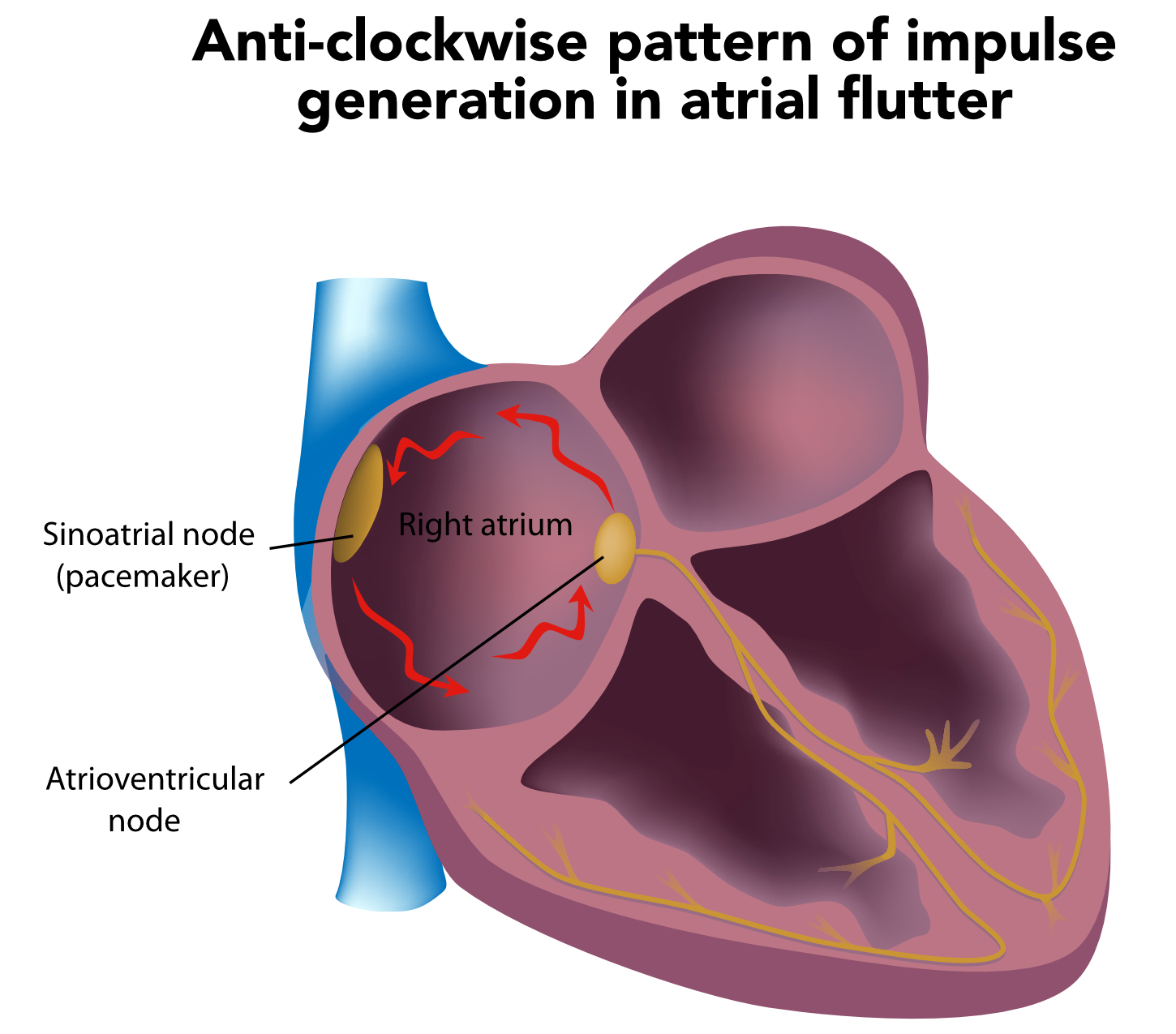Atrial Rhythms – Atrial Flutter
Intensely irritable atria may result in atrial flutter, which has a rapid rate of 250–350 bpm. Atrial flutter has a characteristic sawtooth appearance (see Figure 4.5).
Figure 4.5. Generated Impulse in the Atrial Flutter

Anti-Clockwise Pattern of the Generated Impulse in Atrial Flutter
Since atrial flutter results in such a rapid rate, the patient’s ventricles do not have enough time to fill adequately, leading to a decrease in cardiac output. Patients in atrial flutter may be symptomatic and complain of dizziness, shortness of breath, presyncope, syncope, or chest pain.
The atrioventricular node attempts to mitigate this very rapid firing rate by blocking some of the impulses from reaching the ventricles. The blocking action at the AV node gives the ventricles enough time to fill with blood, so there is adequate blood flow to the systemic circulation. The AV node only allows every second, third, or fourth P wave to pass through.
On the ECG, this is represented by a rapid succession of P waves with a rate of 250–350 bpm, but not every P wave is followed by a QRS complex. Consequently, the ventricular rate is slower than the atrial rate. The QRS complex only manifests every second, third, or fourth atrial (saw-toothed) wave, thereby creating a 2:1, 3:1, or 4:1 block (see Figure 4.6).
Related Video – ECG Rhythm Review – Atrial Flutter
Figure 4.6. Sawtooth P Waves in Atrial Flutter

Atrial Flutter ECG Reading
Characteristics of Atrial Flutter
- Atrial rhythm is regular
- Ventricular rhythm is usually regular but can be irregular if there is a variable block
- Atrial rate is 250–350 bpm
- Ventricular rate may vary
- P waves have a characteristic saw-toothed appearance
- PR interval cannot be determined
- QRS complex is generally normal: < 120 milliseconds